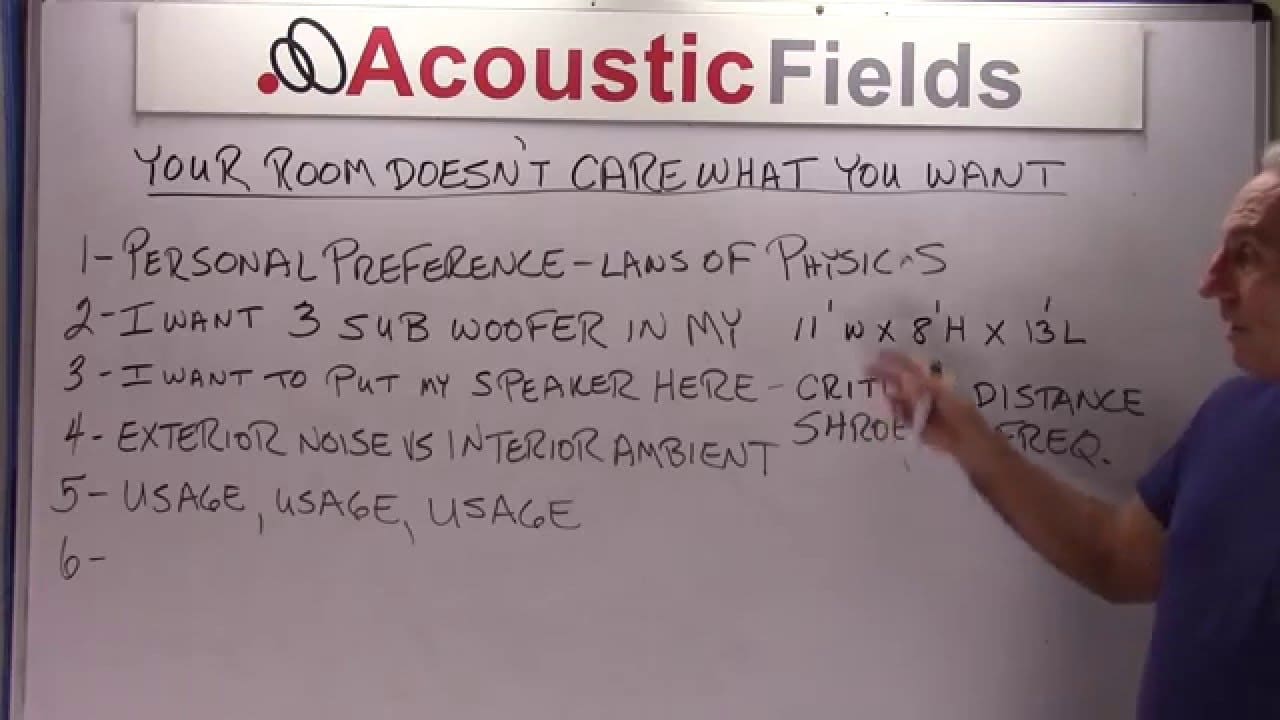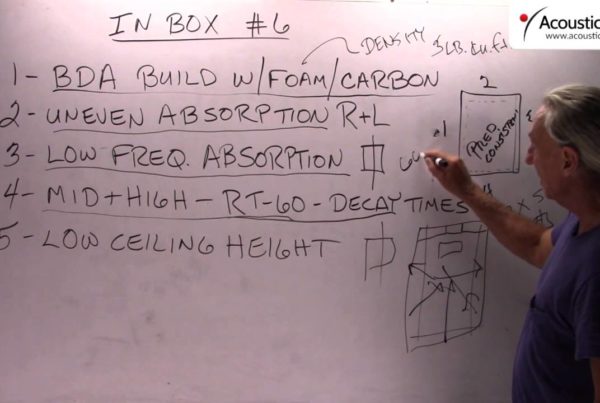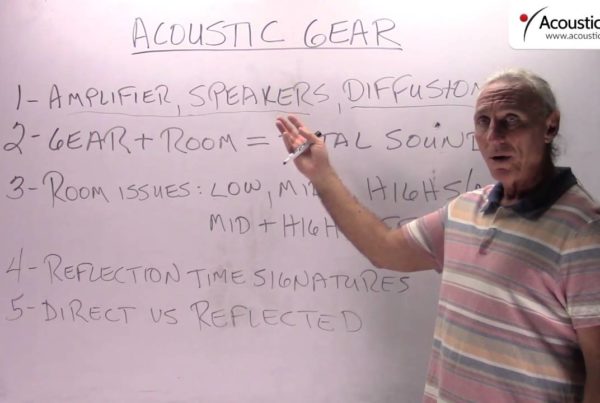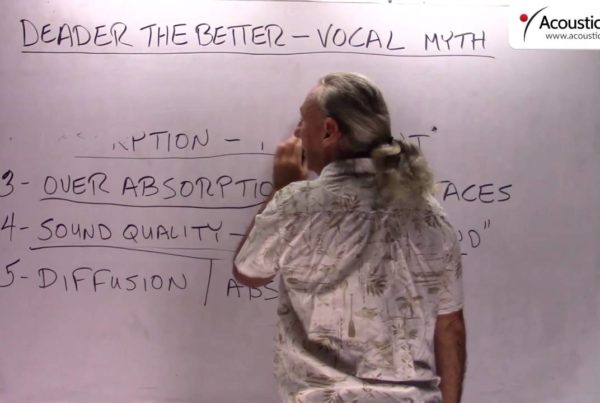Today we’re going to have a little fun – the title of this presentation is „your room doesn’t care what you want“.
I get a lot of people calling me or filling out our room forms, citing me all their personal preferences – „well I have this amplifier, I have this speaker, it’s made by this company“. And the room really could care less about any of that.
It cares about the size and number of your low frequency drivers, but that’s really about it when it comes to speakers. So it really doesn’t care about the quality level of your gear. And what it really only cares about is the quantity of energy that this gear is going to produce in a row. Here is one I get all the time from home theater people: „I want three subwoofers in my 11’’ wide, 8’’ high, 13’’ long room. Probably you shouldn’t have one but wants three.
The room size and volume simply can’t support that kind of energy. Here’s another one that I get: „I want to put my speaker here“. The room will tell you where your speaker needs to go. There’s two variables that we have to consider. Critical distance, which is that magic spot, which is the balance between the direct and the reflected energy in the room, the direct sound from the speakers, the reflected energy from the room. There’s also a term called „Schroeder Frequency“, you can take a shorter frequency as a crossover, like a speaker crossover. It’s a crossover for the room, just like a crossover in a speaker sensor and frequency in certain waves. A shorter frequency is a frequency in which the wave or the rays break in the room. And how they behave, what frequency they’re good at up to, and what frequency they’re not afterwards. We’ll go into that later. But the room tells you, using the laws of physics, where your speakers need to be, where your listening position needs to be, how far the speakers need to be away from the side wall. They really got nothing to do with your personal preference. Here’s another one that people miss a lot: Ex stereo noise vs. the interior amber, ambient and pressure levels.
You have 85 and 90 db external noise sources, even 80 db. And you have a 2×4 frame structure. And you’re going to have higher pressure levels inside the room because of the external noise. So that has to be dealt with first. No matter what you put in it, no matter what speaker you put in it, no matter what amplifier you put in it, no matter what usage you use of the room. And usage is a critical factor. You must define what you’re going to use the room for, and then apply the laws of physics to it. For example, let’s look at a vocal room versus a drum room. Completely different, completely different isolation requirements, completely different noise requirements, completely different size and volume requirements, completely different treatment requirements.
So out of the two main treatment technologies that we have available to us, we have absorption and diffusion, those all vary depending on usage. The usage of the room and applying the particular qualities that the room gives you with size and volume, that will tell you where everything needs to go. So you want to keep your personal choices out it. Pick your usage to find what you want to do in the room and then find the room that has the right dimensions to support that usage. You’ll be way better off. Now yes, there’s minimums and yes, you can go too big. Although I have never seen that issue. I always see too small. So define your usage, and then get the room. Don’t take an existing room and just say, „I’m going to make it a control room“. Then you’re not maybe matching the usage to the size and volume that you’ve chosen. All of these variables have to be taken into consideration. Try to push your ego and your personal preferences out of it. Let the room tell you what it needs, it will make your job a lot easier.
—
This is an unedited transcript from our video series from Acoustic Fields. There will be some errors in grammar and sentence structure that occur during this translation process.
For complete understanding and comprehension, please view the video which is included in this text. For any additional information regarding this topic or others relating to room acoustics, please contact us directly at:
P: 520 – 392 – 9486








We use broadband absorption in the two most critical frequency regions in small rooms. Our Diaphragmatic absorbers, ACDA series, have…
Interesting web site and provocative introduction. Please check your copy for typos, otherwise nicely presented. I would like to see…
There is no such thing as soundproof anything especially carpet. Low frequency noise transmission requires a permanent construction fix with…
Hello Dennis! Our neighbors put a Ice Bath in their garage which is right below our bedroom and the Low…